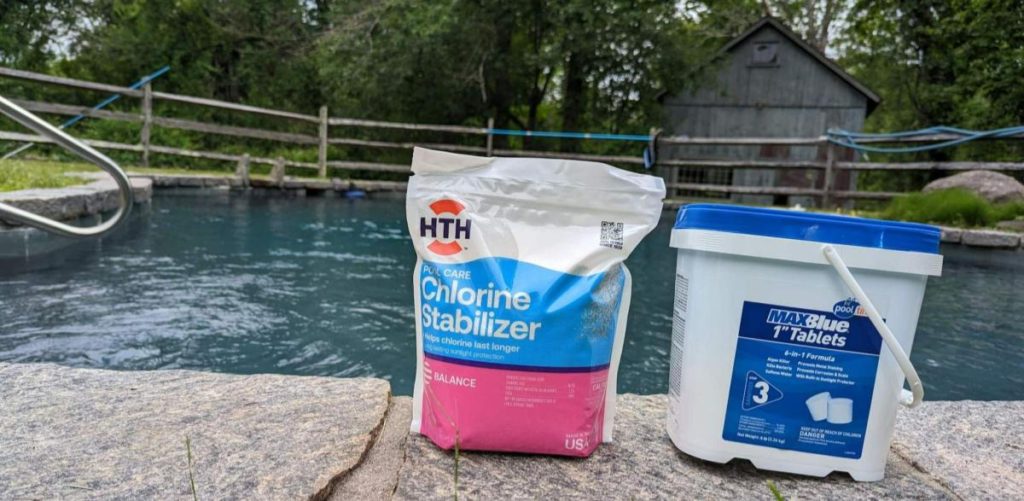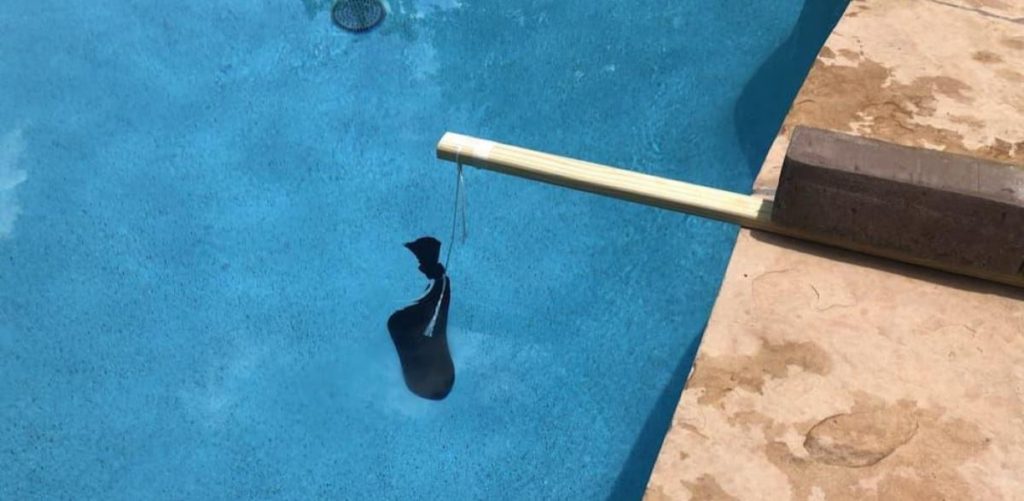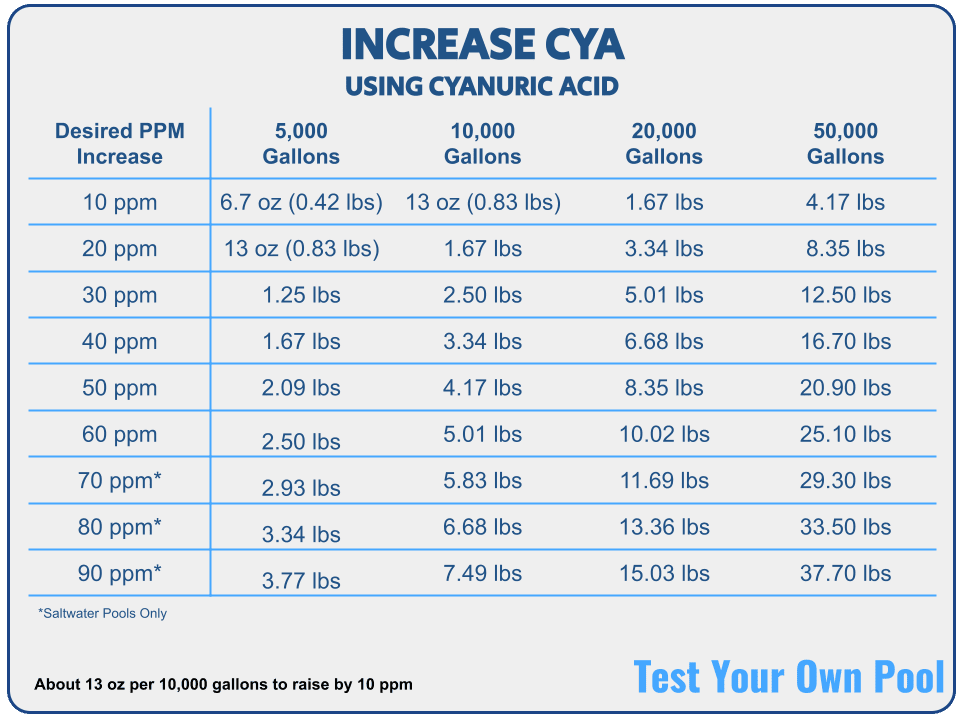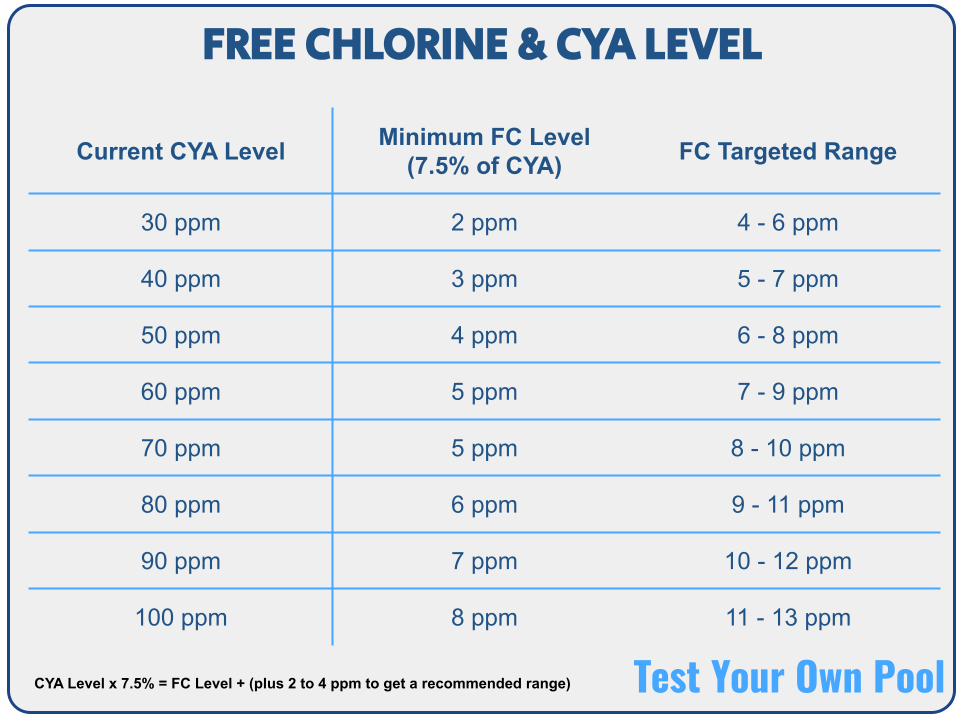If you ever notice your free chlorine (FC) levels getting wiped out too quickly on a sunny day, chances are your cyanuric acid levels are low.
Cyanuric acid (CYA) is a stabilizer that shields chlorine from being degraded by the sun’s UV rays. This ensures that the chlorine used can last longer in the water.
Typically, CYA levels should be between 30 to 60 ppm. If CYA gets too low, chlorine may not be as effective, so we must raise cyanuric acid levels.
How to Raise Cyanuric Acid in a Pool
Raising CYA in a pool is pretty simple: add cyanuric acid!
It can either be added directly to the pool or used with a stabilized type of chlorine, which contains a stabilizer (aka cyanuric acid).

Keep in mind that CYA cannot be raised naturally or with any chemical other than cyanuric acid.
Adding Cyanuric Acid Directly Into The Pool
Cyanuric acid is most commonly bought in granular form. You can find it in a liquid form, and although it is easier to handle, it is more expensive than granular.
Helps reduce chlorine loss due to sunlight and organics. 7-pound bag.
The granules can take some time to fully dissolve in water, so a common way to add CYA is the “sock method.”

Take a regular sock, skimmer sock, or nylon panty liner, fill it with the necessary amount of CYA, and tie it up.
Then, tie the sock at the end with a telescopic pool pole or any stable accessory. Place the sock in front of a return jet in the deep end and secure the pole to the decking.
After a half hour or so, squeeze the sock and let the CYA granules slowly dissolve out of the sock.
Depending on how much CYA is added, this method will take a couple of hours. Test 24 hours after CYA has been fully dissolved.
Use our cyanuric acid calculator to see how much CYA you need to add based on the desired increase in ppm.
Refer to this chart for a quick overview. Remember, these are all estimations. If a large addition is necessary, add small doses and test them in between.
You can only lower CYA by draining, so don’t overshoot your dosage!

Using Stabilized Chlorine
Stabilized chlorine products, such as dichlor and trichlor tablets, contain cyanuric acid. Not only do they sanitize the pool, they’re also gradually raising CYA levels.
When using tablets, monitor the CYA levels closely. Typically, 1 ppm of chlorine added with pucks increases cyanuric acid levels by 0.6 ppm.
What Causes Low Cyanuric Acid Levels?
Cyanuric acid doesn’t naturally decrease in the pool, so the only way to lower CYA is by partially draining and refilling the water.
Any type of water loss, such as splashing out, backwashing, leaks(!), or draining, will decrease CYA.
It is very normal to experience cya loss over the winter if you close your pool. Typically, a mesh cover allows for a larger drainage of water that gets replaced by snow melt and rain.
What Does Low CYA Do to a Pool?
When CYA levels are too low, the chlorine in the pool quickly breaks down by the sun’s UV rays. This rapid degradation of chlorine will force you to use even more chlorine.
To simplify this, lower CYA levels will render chlorine less effective and you can run the risk of developing water issues like algae outbreaks.
Free chlorine levels are effective when 7.5% of the CYA level is FC. For example, if you have a CYA of 30 in the pool, you need a minimum of 2 ppm FC. I like adding about 2 to 4 ppm in the range to ensure I never go under, so a CYA of 30 ppm should have 4 to 6 ppm of FC.
Use this quick CYA calculator to determine your recommended FC levels:
Free Chlorine & CYA Levels
You can also refer to this chart for a full overview of the FC and CYA levels:

Raise and Test!
Ensuring CYA levels are within the optimal range is crucial for an effectively sanitized and balanced pool.
Whether you add cyanuric acid directly or use stabilized chlorine, regular monitoring and testing are crucial!

